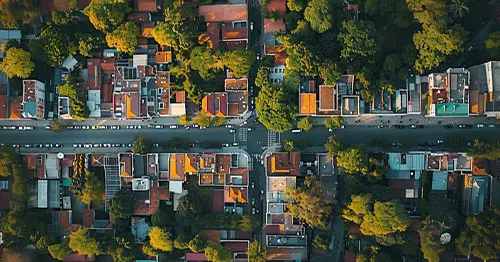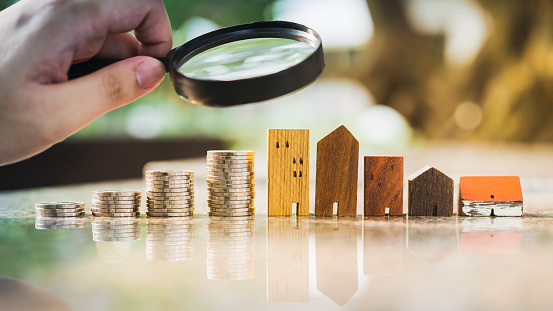Updated: 06 Dec, 2024
As of 1 July this year, the First Home Saver Account (FHSA) is no longer available to hopeful first home buyers.
The account provided savers with tax breaks and co-contributions from the government. It sounded pretty good but by the time it was scrapped, there was only around 47,000 active accounts, according to September 2014 estimates from the Australian Prudential Regulation Authority (APRA).
The scheme was poorly constructed and the risk of having your deposit money ending up in your super fund wasn’t received well by the general public!
If you were an account holder or you were planning to sign up to the First Home Saver Account, find out what this means for you and how to save a home loan deposit now that the FHSA is no more.
What if I had a first home buyer saver account?
Did you know that you can still receive a government co-contribution payment?
If you haven’t received it yet, you have until 30 June 2017 to lodge your claim for the period up to 30 June 2014.
Please note that you can only receive the government contribution after:
- You’ve lodged a tax return or you’ve lodged an FHSA notification of eligibility form if you don’t need to lodge a tax return.
- Your account provider has lodged an activity report with the Australian Taxation Office (ATO) by 31 October 2016.
After the ATO receives the necessary information, they generally take up to 60 days to calculate and pay the amount.
If your account is closed, you can complete a Government contribution destination nomination form which you can find on the ATO website.
Note: First Home Saver Accounts that were opened after 7:30pm on 13 May 2014 and deposits made after 1 July 2014 aren’t entitled to government contribution or tax concessions.
If your account is closed, you can complete a Government contribution destination nomination form which you can find on the ATO website.
Note: First Home Saver Accounts that were opened after 7:30pm on 13 May 2014 and deposits made after 1 July 2014 aren’t entitled to government contribution or tax concessions.
How did the First Home Saver Account work?
The first home saver account was a dedicated bank account introduced by the Australian Labor Party in 2007 to help first home buyers save a deposit. It worked a lot like a superannuation account in that it’s money contributed by the account holder and accessed at a later date.
What was great about this was that you received tax and social security concessions and the government even chipped in with a co-contribution, specifically, up to $1,020 on the first $6,000 you deposited each year.
Although tax concessions were also granted to FHSA holders, there were restrictions on when you could access your money and the funds could only be used for a payment on your first home.
On top of that, the maximum account balance was capped at $90,000. Once your savings reached this level, only interest and earnings could be added to the balance.
Why was the scheme scrapped?
The problem with the First Home Saver Account was that in order to close the account and access the funds, you had to deposit at least $1,000 every year into the account for at least four financial years, which was known as the ‘four year rule’.
Because of this rule, the number of first home saver accounts and the quantity of savings grew much more slowly than the the government expected.
The Treasury forecasted 730,000 accounts and a $6.5 billion balance for 2012 but the estimation wasn’t even close to being met even towards the end of 2014.
Instead of attempting to save it, the government scrapped the First Home Saver Account scheme entirely.
If you’re an existing first home saver account holder, you can access your funds because these accounts have now been converted into ordinary savings accounts.
How to save a deposit
Even though the FHSA is gone, you can still save a home loan deposit the old fashioned way.
If you’re not sure of how much to save for a deposit, you can start by setting a goal of 5% of the property value since it’s a great target and meets most lender’s requirements for genuine savings, which is typically, savings that have been held for 3 months in a savings account.
Of course, in reality, you’ll need a bit more than 5% to cover such expenses as stamp duty and conveyancing costs, depending on the state you’re buying in. There’s also the cost of Lenders Mortgage Insurance (LMI) to think about.
LMI is a one off fee generally charged when borrowing more than 80% of the property value and can amount to thousands of dollars depending on the value of the property you want to buy.
You can use the LMI calculator to get an estimate on the amount of LMI you’ll have to pay. The bigger your deposit, the less you’ll pay in LMI.
After you’ve met your savings goal, take action and speak with your mortgage broker. The longer you wait, the higher the chance that house prices will rise and you’ll need an even bigger deposit.
Luckily, the First Home Owners Grant (FHOG) is still in place to help you along. Find out how to qualify for the grant and what documents you’ll need by checking out our FHOG guide.
To learn more about how you can save a deposit and break out of the rental trap, have a look at the saving for a home deposit page for some great tips.
There are no deposit solutions out there!
Although saving a good deposit is typically the best way to get into the Australian property market, the scrapping of the FHSA scheme doesn’t have to stop you from getting a home loan.
If your parents or a close relative are willing to act as guarantor or gift you the money for the home loan deposit, you can get into your first home even faster!
The no deposit home loan page provides more info on getting approved and what other no deposit solutions are available to first home buyers.
Get help from a mortgage broker
Our mortgage brokers are credit specialists who understand how to get first home buyers approved for a home loan even if they have a low deposit or no deposit at all.
Call us on 1300 889 743 or complete our free assessment form to get in touch with one of our mortgage brokers.





